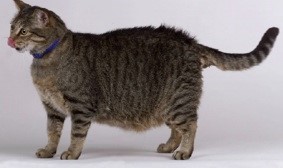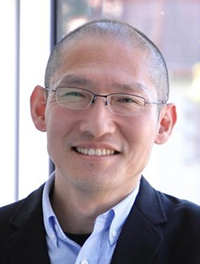Name of Supervisor: Ichiro Yamamoto, Ph. D. (Bioagricultural Science)
Position: Professor
researchmap
KAKEN researcher number: 00424763
ORCID ID:0000-0002-3000-0699
Main research theme: Lipid metabolism of cat
Research keywords: Reverse pharmacology, G protein coupled receptor, molecular biochemistry
Lab. Location: Veterinary Biochemistry, 4th floor, Building D
E-mail: ichiroy(@mark)nvlu.ac.jp
Research
Unlike dogs, cats have a high incidence of type 2 diabetes. Diabetes is often caused by obesity, and there remains a need to elucidate the mechanism of lipid metabolism in cats. Fat comprises of glycerol and fatty acids, and are classified as short chain (~6), medium chain (8~12), or long chain (14~) fatty acids based on the number of carbon atoms they contain. Fats are essential nutrients and provide energy. However, fat is also a ligand involved in various intracellular processes. The receptors that transmit this ligand action (FFAR1-4) are G protein-coupled receptors involved in lipid metabolism and immune function. Several antiobesity drugs targeting FFAR1-4 have been developed for humans, and we are currently conducting research to validate their effectiveness as antiobesity treatment for cats and to help develop genetic diagnostic technology.
Guidance policy for graduate students
Till date, I have supervised three graduate students who aimed to obtain degrees (and presently are university professors), actively incorporating my knowledge and skills along with the latest findings and techniques. Furthermore, based on my experience while obtaining a doctoral degree at a university different from my alma mater and working as a postdoctoral fellow in both Japan and Canada (University of Alberta), I have experienced the wonders, joys, and challenges of a heterogeneous research environment. We welcome graduate students from a variety of backgrounds.
I would like all graduate students to always think about what they want to know and what they should do. Although a hypothesis is necessary to solve a question and find an answer, I believe graduate students have capability to accept that their hypothesis is incorrect. If you’re wrong, just admit it and try again. Let’s move forward without fear! In addition to writing report papers, which are essential for researchers, presenting your research is an essential skill needs to be cultivated during graduate school, including preparing applications for the Japan Society for the Promotion of Science Research Fellowship and Grants-in-Aid for Scientific Research. We strive to provide thorough guidance while maximizing the strength of each student.
Publications
1.Habara M, et al. Molecular characterization of feline melanocortin 4 receptor and melanocortin 2 receptor accessory protein 2. Gen Comp Endocrinol. 2018 May 15;261:31-39. doi: 10.1016/j.ygcen.2018.01.020.
2.Ishikawa S, et al. Short communication: molecular characterization of dog and cat p65 subunits of NF-kappaB. Res Vet Sci. 2015 Apr;99:145-8. doi: 10.1016/j.rvsc.2015.02.009.
3.Takemitsu H, et al. Mechanism of insulin production in canine bone marrow derived mesenchymal stem cells. Gen Comp Endocrinol. 2013 Aug 1;189:1-6. doi: 10.1016/j.ygcen.2013.04.009.
4.Yamamoto I, et al. cDNA cloning and mRNA expression of cat and dog Cdkal1. Vet Med (Auckl). 2012 Aug 10;3:65-69.
doi: 10.2147/VMRR.S32540.
5.Yamamoto I, et al. Two chicken neuromedin U receptors: characterization of primary structure, biological activity and tissue distribution. Gen Comp Endocrinol. 2011 Nov 1;174(2):116-23. doi: 10.1016/j.ygcen.2011.08.004.
6.Yamamoto I, et al. Primary structure, tissue distribution, and biological activity of chicken motilin receptor. Gen Comp Endocrinol. 2008 May 1;156(3):509-14. doi: 10.1016/j.ygcen.2008.03.007.
7.Yamamoto I, et al. Molecular characterization of sequence and expression of chicken GPR39. Gen Comp Endocrinol. 2007 Mar;151(1):128-34. doi: 10.1016/j.ygcen.2006.12.002.
8.Yamamoto I, et al. cDNA cloning and mRNA expression of Transformer 2 (Tra 2) in chicken embryo. Biochim Biophys Acta. 2002 Dec 12;1579(2-3):185-8. doi: 10.1016/s0167-4781(02)00511-0.


